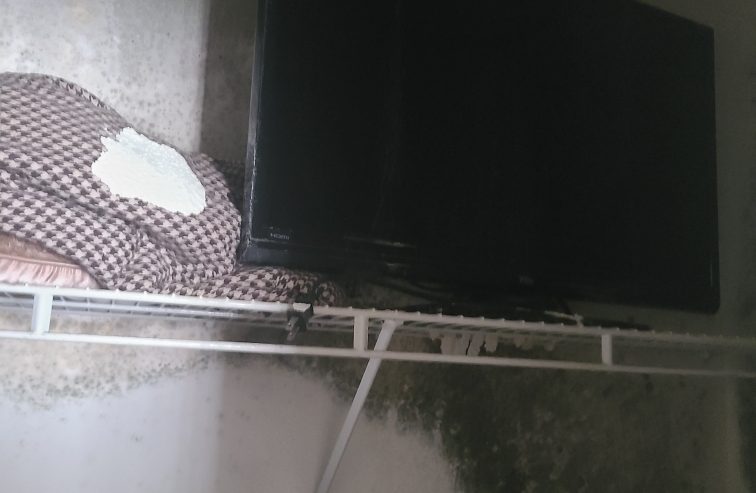With the recent surge in rainy days and high humidity, the threat of rain-induced mold growth looms large for many homeowners. Mold thrives in damp environments, and when moisture from rain and humidity infiltrates our homes, it can lead to serious health and structural problems.
Understanding how to prevent mold and what steps to take if it appears is essential in maintaining a healthy living space. Here’s a comprehensive guide to keeping rain-induced mold at bay and dealing with it effectively if it does occur.
Understanding Mold Growth
Mold is a type of fungus that grows from microscopic spores that float through the air. It can thrive in virtually any environment with moisture, oxygen, and organic material to feed on. The most common types of mold found in homes include Cladosporium, Penicillium, and Aspergillus. When mold spores land on damp surfaces, they begin to grow and spread. According to the Environmental Protection Agency, sneezing, runny noses, headaches, and asthma attacks are just a few of the health risks associated with indoor mold growth.
Preventing Rain-Induced Mold Growth
Prevention is the best strategy when it comes to mold. Here are some key steps you can take to minimize the risk of mold growth in your home:
- Control Humidity Levels: Keep indoor humidity below 60%, ideally between 30% and 50%. Use a hygrometer to monitor humidity levels and employ dehumidifiers and air conditioners to maintain a dry environment, especially in basements and bathrooms.
- Ensure Proper Ventilation: Make sure your home is well-ventilated. Use exhaust fans in kitchens and bathrooms, and open windows when the weather permits to allow fresh air to circulate. Consider installing energy-efficient windows and doors to improve ventilation.
A closet often lacks proper ventilation, so it’s essential to ensure adequate air circulation inside.
- Fix Leaks Promptly: Repair any leaks in your roof, walls, or plumbing immediately. Even small leaks can lead to significant mold growth if left unchecked. Regularly inspect areas prone to leaks, such as around windows, under sinks, and in the basement.
- Use Mold-Resistant Products: When building or renovating, use mold-resistant drywall, paint, and insulation. These products are designed to resist moisture and inhibit mold growth.
- Keep Surfaces Dry: Wipe down wet surfaces promptly. Pay special attention to bathrooms, kitchens, and laundry areas where water is frequently used. Use squeegees to remove water from shower walls and floors.
- Clean and Maintain Gutters: Ensure your gutters and downspouts are clean and direct water away from your home’s foundation. This prevents water from seeping into the basement or crawlspace.
Addressing Mold Growth
Despite your best efforts, rain-induced mold can still find a way into your home. If you discover mold, here’s how to handle it:
- Identify and Address the Source of Moisture: Before you can effectively remove mold, you must eliminate the source of moisture. Fix any leaks or improve ventilation to prevent further mold growth.
- Wear Protective Gear: When dealing with mold, wear gloves, goggles, and a respirator to protect yourself from mold spores.
- Isolate the Area: Contain the moldy area to prevent spores from spreading to other parts of your home. Close doors and windows, and cover vents and doorways with plastic sheeting.
- Remove Moldy Materials: Porous materials like drywall, insulation, and carpeting that have been extensively contaminated by mold often need to be removed and replaced. Non-porous materials can usually be cleaned and disinfected.
Remove the affected drywall and carpeting or you run the risk of leaving mold behind.
- Clean and Disinfect: Use a mixture of water and detergent to scrub mold off hard surfaces. Once cleaned, disinfect the area with a solution of 1 cup of bleach to 1 gallon of water. Be sure to rinse the area thoroughly and dry it completely.
- Dry the Area Completely: Use fans and dehumidifiers to dry the cleaned area thoroughly. Mold can reappear if the area remains damp.
- Monitor the Area: Keep an eye on the previously affected area to ensure that mold does not return. Maintain proper humidity levels and address any new moisture issues immediately.
If mold reappears, it is time to call a professional.
When to Call a Professional
In some cases, mold infestations are too severe to handle on your own. If the mold covers an area larger than 10 square feet or if you have health concerns, it’s best to call a professional mold remediation service. Professionals have the expertise and equipment to safely and effectively remove mold and prevent it from returning.
Call PuroClean of Wolf Creek for Mold Remediation Services Today!
If your mold infestation is too severe, call PuroClean of Wolf Creek. Mold can pose a significant threat to various environments, affecting both aesthetics and quality. Mold growth can arise unexpectedly, so it is crucial to be prepared. If you discover mold in your home or business, call PuroClean of Wolf Creek at (404) 682-5400! Our experts are ready to tackle your mold removal needs any time, any day.




 PuroClean of Wolf Creek
PuroClean of Wolf Creek